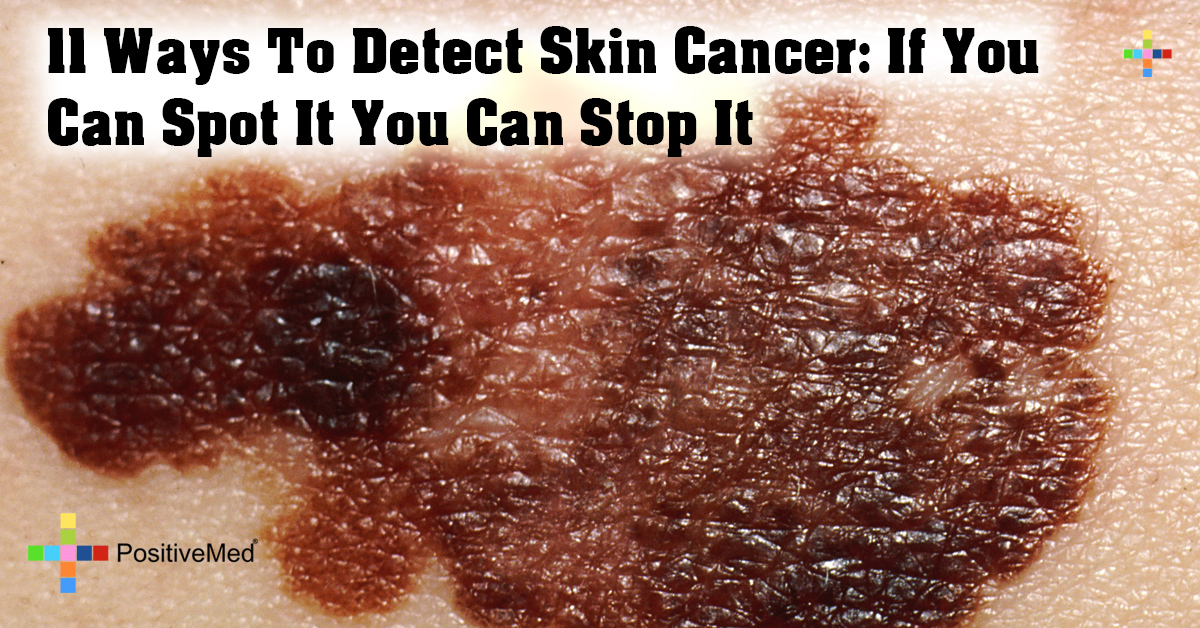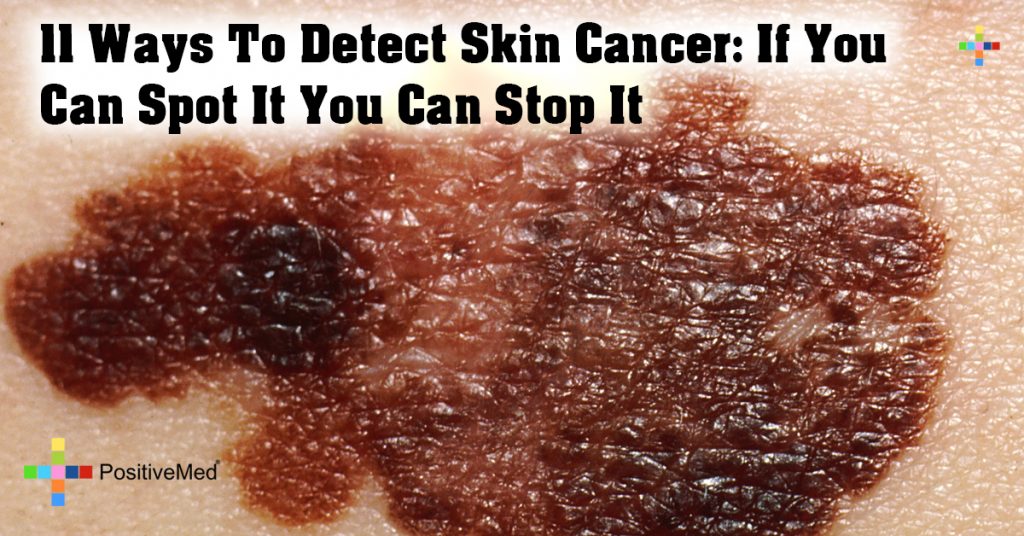
Skin cancer has become one of the most common types of cancer in the last couple of decades. More people have been diagnosed with some form of skin cancer than every other kind put together in the last 30 years or so. The best defense is how to detect skin cancer in an early stage. There are two categories skin cancer is classified in – Melanoma and Nonmelanoma (Basal Skin Carcinoma and Squamous Cell Carcinoma).
While melanoma is rare, nonmelanoma skin cancer is quite common, particularly BCC or basal cell carcinoma which is the most common type. People who frequent tanning beds and don’t use sunscreen are at a greater risk of suffering from skin cancer than others. There are also many other risk factors involved like family history.
Some symptoms of skin cancer can be detected by people by checking their bodies. Here are 11 ways to detect skin cancer:
1- Asymmetrical Moles
– Cancerous moles tend to be asymmetrical. This means that the shape isn’t symmetrical and the best way to test this is by drawing an invisible line along the middle of the mole. Do both the parts of the mole match up to each other? If it helps, you can use a sharpie to draw an actual line as well. If the parts are not in symmetry, it could be a problem and you should see a doctor.
2- Moles With Irregular Edges
– Regular moles that crop up in your body have smooth edges. If you have moles in your body that come with jagged edges or irregular edges, they might not be average moles at all. In this case, you should have a loved one inspect all your body (especially the hard to reach areas) and consult a doctor.
3- Moles That Change Color
– It is never good to have a mole that was one color a few days or weeks ago and is a different color now. This is why it is important to keep a close eye on the moles on your body to ensure that their color remains the same. If it does, it is probably nothing but if the color changes, the mole might be a cause of worry.
4- Moles That Change Size
– Similar to color, size is another important factor to watch out for when it comes to moles’ inspection. Make sure that you keep a close eye on your moles to notice if any get bigger in size because that is definitely a red flag, especially if the size is bigger than that of a pencil eraser.
5- Moles That Hurt/Bleed
– Regular moles shouldn’t bleed or hurt. If you have moles that are bleeding or oozing or hurt when you touch them, then that is a sure sign of trouble and you should get that mole checked out as soon as possible.
6- Bruises That Don’t Heal
, Particularly On The Feet – If you have a bruise on your feet that refuses to heal on its own or after applying OTC topical treatments, it could be problematic. You could have suddenly woken up with this bruise on your feet or it could have occurred after you hurt yourself – that doesn’t matter.
7- HPV Exposure
– If you have been exposed to HPV, you could have SCC. So, even though you have been keeping a close eye on all the areas that get a lot of sun exposure, there are regions like your genitals that could have HPV developing into squamous cells, despite not getting any sunlight. HPV sufferers should definitely see a doctor get their genital warts examined.
RELATED ARTICLE: Protect Your Health by Learning the ABC’s of Skin Cancer Identification
8- Sores
– Average sores are fine but sores that don’t heal spell trouble. “Nonhealing sores” usually occur on the skin that is protected from sunlight. This means the inside of the mouth, the inner corner of the lips, and similar areas. Smokers tend to get a lot of non-healing types of sores which is why smoking is one of the risk factors of skin cancer, particularly SCC.
9- Streaks Under Nails
– When you look under your fingernails, you will find some dirt and grime but if you also see streaks, you should take note. The streaks would be either brown or black in color and they would be right under your nails and might look like a clot or hemorrhage but these streaks are symptoms of skin cancer and should be checked out as soon as possible.
10- Crusty Skin
– Crusty skin occurring due to skin cancer is quite different from regular and dermatological skin conditions like dry skin or even eczema. Detect skin cancer based on the early signs is the key. Scaly skin is a massive indicator of skin cancer and can often look like psoriasis and other skin problems. However, when topical creams are applied to this area, the skin won’t show any signs of improvement.
11- Non-Healing Pimples (Persistent Pimples)
– If there is a pimple on any part of the body that has been there for months and refuses to heal on its own, it is most certainly not acne and could be something else.
There are many symptoms of skin cancer that overlap one another and so, for people who have a family history of skin cancer and satisfy the risk factors, it is imperative to check your body regularly for any moles, warts, flaky skin, and other signs of trouble. Catching it early might help to nip it in the bud before it grows and spreads.






